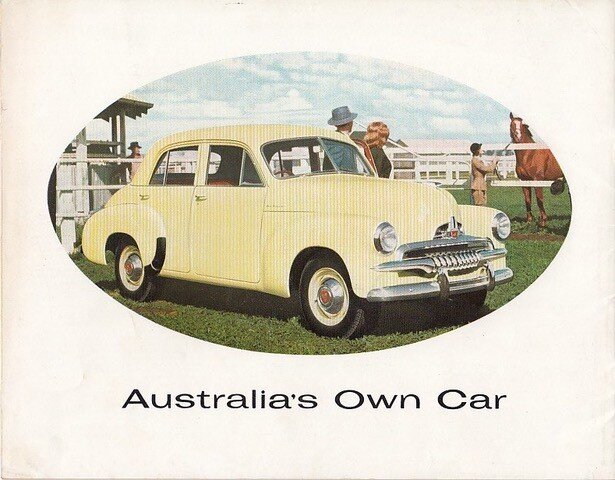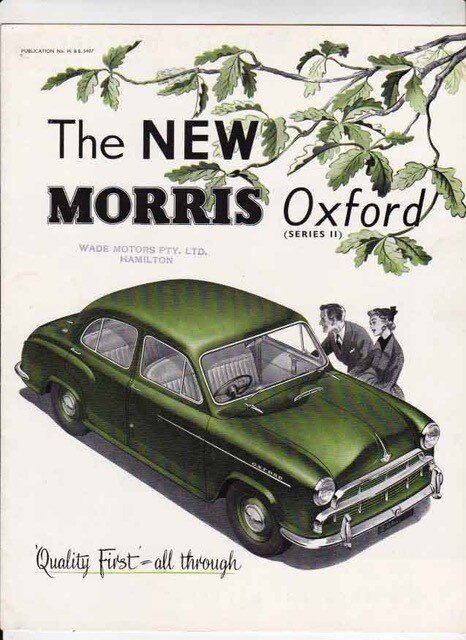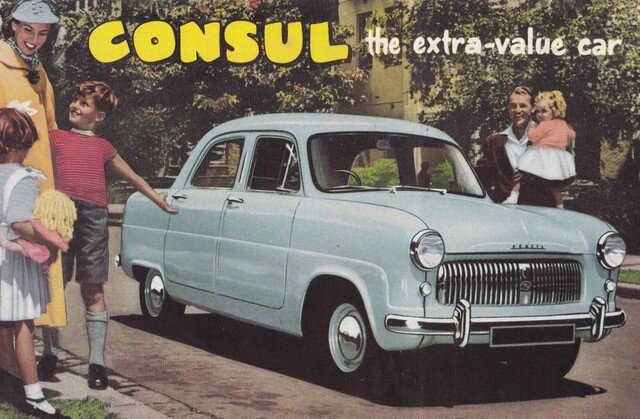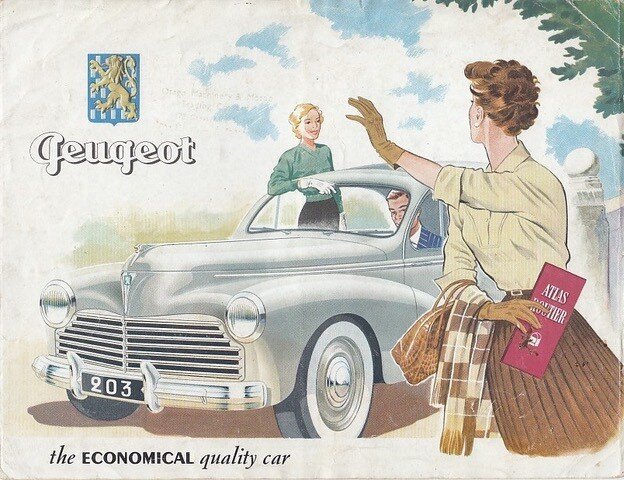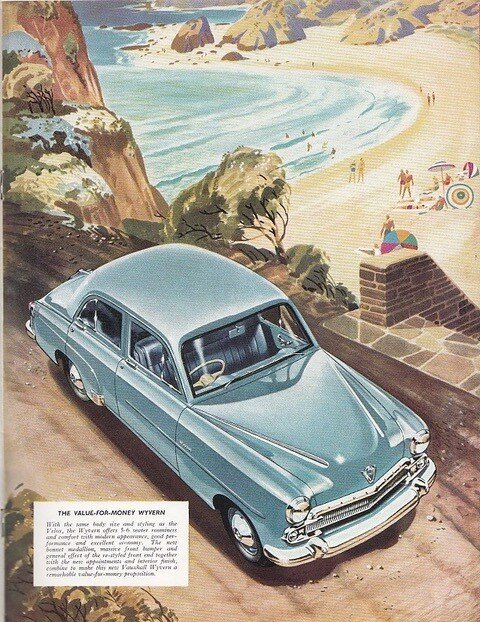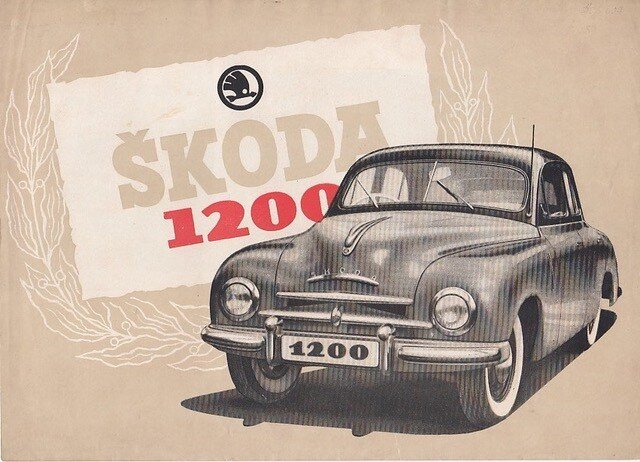The Austin A50 Cambridge and its Australian Competition
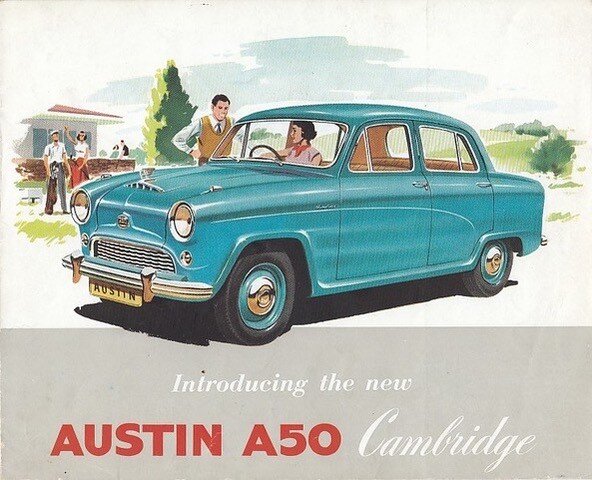
In November 1954, the Austin A40/A50 Cambridge replaced the long-running A40 Devon/Somerset range after an innings of over seven years. After the A30, this was Austin’s next foray into monocoque bodies, that is, without a chassis. It was also the first use of the new B-Series engine, which had been developed from the 1200 cc unit in the A40.
The new Cambridge was available in the UK as an A40 with the 1200 cc engine, while the A50 came with the 1489cc B-series. Initially it was intended to offer a 2-door version, and after a handful were produced, it was decided to just offer a 4-door sedan. The old-style A40 Commercials were continued alongside the newer car, running up until about 1956.
In Australia, the A50 was offered as a fully imported car, or as an Australian assembled unit, made in Melbourne. The British car cost £1092, whereas you could save £29 and pay £1063 for the local version.
It proved to be a popular choice with many people loyal to the Austin brand, trading in their A40s or moving up from an A30 as their families grew. Australia in the 1950s experienced a boom as it recovered from the Depression and World War 2. With this came a growing demand for new cars as cities expanded into outlying suburbs with public transport not being able to satisfy this growth.
GMH certainly got in the ground floor with the Holden in 1948 and it dominated the sales market with nearly 50% of the market by 1958. So, lets have a look at what you could buy with a full wallet with between 1000 and 1100 crisp one-pound notes in October 1955. In alphabetical order:-
Austin A50 (Australian assembled) - £1063
Ford Consul - £1051
Holden FJ Special - £1044
Morris Oxford Series II - £1046
Peugeot 203 - £1098
Simca Aronde - £1092
Skoda 1200 - £1095
Vauxhall Wyvern - £1050
One can see why Holden achieved the sales it did - offering a six-cylinder car for the price of a four to a country who was convinced that a family car had to be a six. The Standard version of the FJ was even cheaper at £993, the difference being extra chrome and a cigarette lighter. For an extra £90 the Ford buyer could opt for a 6-cylinder Zephyr, or £69 for a Vauxhall fan to go for a Velox. If you fancied a 6-cylinder Austin, the Westminster was yours for an extra £239. The Morris Isis would set you back another £289 over the Oxford - the BMC duo catered to a much different market than the other sixes.
So, what did the A50 Cambridge offer over its rivals? It shared many of its features including the B-Series 1489 cc engine with the Morris Oxford and both of these were probably better equiped than most of their locally built rivals. They both had four speed boxes like the French and Czech cars, but the Ford, Vauxhall and of course Holden stuck with three. The A50 had opening rear quarter windows - a sort of early version of through-flow ventilation. One gripe was the friction opening door windows it shared with Vauxhall owners, they never worked as well as wind-ups. The Skoda was the only one of this group to have a separate chassis and independent suspension all round; these rugged little cars were made specifically for the rough roads of Central Europe and coped well here. It was handicapped by less power than the others and a limited amount of dealers in this country. Peugeot had already cemented its reputation with its 1953 Redex Trials win, but may have been seen as slightly too small for a family car. The Simca was on the rise; it saved the day for Chrysler Australia before the Valiant was introduced in the 1960s. Both the Consul and Wyvern looked like cheap versions of their 6-cylinder sisters, the Wyvern had a stripped out appearance.
This leaves the BMC Oxbridge twins - both Austin and Morris had dealerships in every town and they had a large group of loyal owners which had been built up even before the war. They were mostly those people loyal to the UK, with the increasing number of British migrants adding to the total. The cars' reputation was one of reliability, particularly the A50 after the enormous amount of A40 Devons sold in the late 1940s and early ‘50s. Your local Austin dealer could give you a good trade in for your old Austin. The Cambridge had up-to date styling compared with the Holden - flush sides, curved windscreen, individual front seats, 12 volt electrics including wipers and indicators, temperature gauge, a relatively roomy boot made possible by the spare wheel in a wind down tray, more than adequate brakes and an effective handbrake. Comparisons with the Oxford are harder - the Morris was slightly roomier, it had more gauges, but it had a bench seat and non-opening rear quarter lights. The major difference was the front suspension set-up; the Austin used coil springs and lever-arm shocks, the Morris featured torsion bars and telescopic shocks, along with rack-and -pinion steering.
Sales figures aren’t available, but in this line-up it would be safe to say the Austin sold slightly more than the rest except Holden, probably followed by the Oxford, Consul, Wyvern, Simca and then Skoda.
I have left the prices in the old currency; the buying power of £1050 in 1955 is the equivalent of $37,558 in today’s money, which goes to show the purchasing power is much more than it was 65 years ago!


